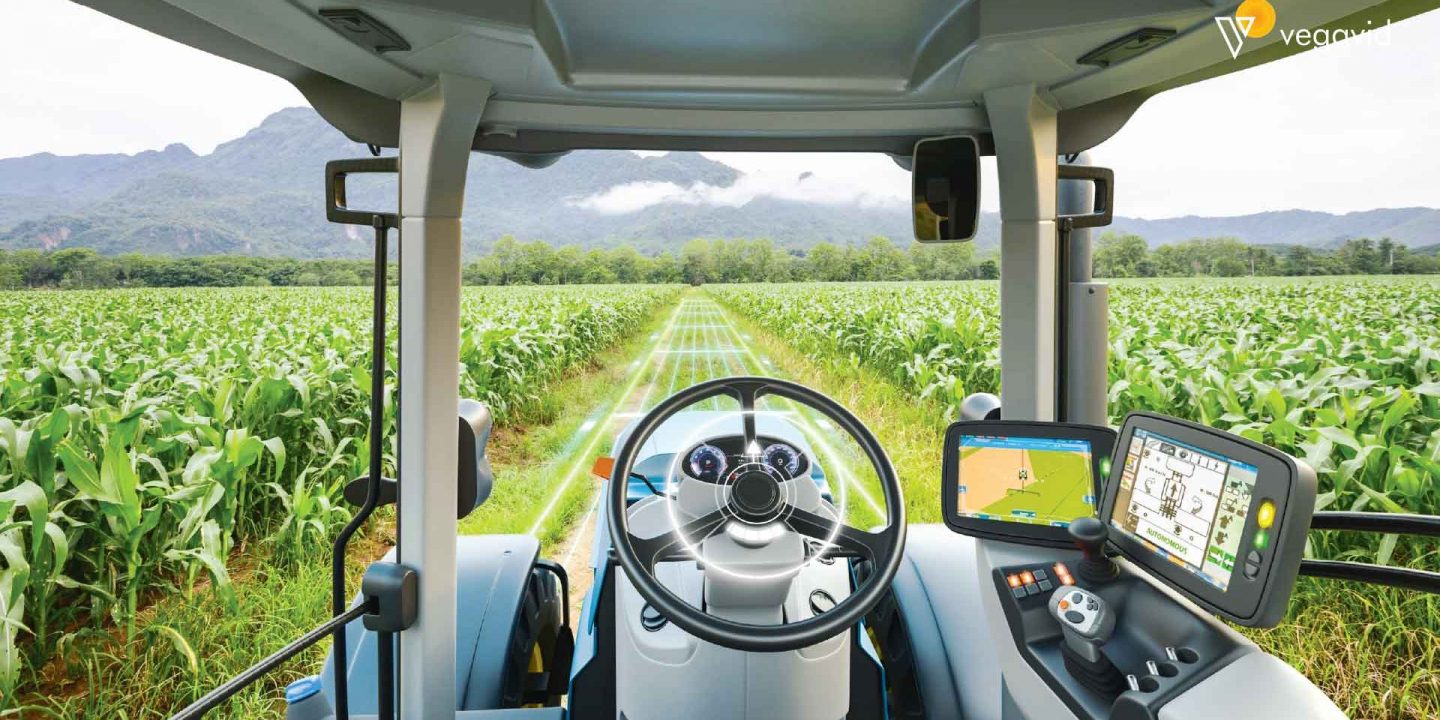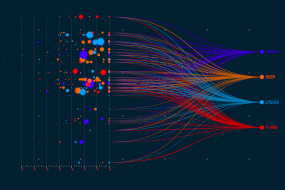
5G is the next-generation wireless technology that promises faster data speeds, lower latency, and better connectivity. This new network standard has the potential to revolutionize many industries, including farming and agriculture. From enabling real-time monitoring of crops and soil conditions to automating farm machinery, 5G has the potential to make agriculture significantly more efficient, precise, and sustainable. However, there are also challenges in harnessing the benefits of 5G for farming due to issues like high infrastructure costs, data security, and network reliability in rural areas.
Here we can discuss the capacity use instances of 5G generation for agriculture in addition to the concerns and challenges in adopting 5G networks on farms. We will look at how higher connectivity velocity and decreased latency should allow technology like precision farming, self-reliant motors, and far-off monitoring structures to convert the manner we farm. The dialogue can even aim to provide a top-level view of the possibilities and challenges for farmers in leveraging 5G networks to produce extra with much less.
What is 5G technology?
5G is the next generation of wireless technology that will provide faster network speeds and connectivity. 5G networks will offer speeds ten times faster than the fastest available 4G networks today. With 5G, you can expect mobile data speeds from 1 to several gigabits per second depending on the network. This means 5G will enable many new applications that require high speed and low latency like virtual reality, self-driving cars, telemedicine, and more.
5G uses higher frequency bands to deliver higher speeds but suffers from shorter ranges and difficulty passing through walls. 5G networks require many more wireless signal base stations for coverage compared to 4G. 5G technology also offers not just faster mobile broadband but also enables a huge increase in the number of connected devices through the Internet of Things.
Importance of technology in Farming and agriculture
Technology is playing an increasingly important role in agriculture to improve farming methods, tackle challenges and boost productivity. Precision technologies like GPS, IoT sensors, and drones can help farmers monitor soil and crop conditions, optimize inputs and automate tasks. This leads to benefits like higher yields, fewer inputs, and reduced waste. Data analytics and AI are helping farmers make better decisions by analyzing vast amounts of data from farms and weather information.
Technologies like genomic editing are improving crop varieties to make them more resistant to pests, diseases, and climate change. Automation and robotics are making farming processes more efficient by replacing labor-intensive and repetitive tasks. Overall, agricultural technologies also make farming smarter and more sustainable by improving resource use efficiency, reducing environmental impact, and helping farmers adapt to a changing climate.
Advancements in Agricultural Technologies
Agricultural technologies are advancing rapidly to increase crop yields, improve sustainability and address issues like climate change. Precision agriculture technology the usage of GPS, sensors, and drones is allowing farmers to precisely observe inputs like water, fertilizer, and pesticides primarily based on real-time area situations. Automation and robotics are being added for responsibilities like weeding, crop tracking, and harvesting. Genetically changed vegetation is being developed with tendencies like pest resistance and drought tolerance. Indoor vertical farming and hydroponics are permitting year-round crop manufacturing with much less land and water.
Blockchain generation is being used to offer traceability, transparency, and performance in supply chains. Nanotechnology and biotechnology are growing new substances and crop types. Artificial intelligence and machine learning are helping farmers make data-driven decisions. Overall, these technological advancements have the potential to transform agriculture by making it more productive, efficient, climate resilient, and sustainable to meet growing food demand.
The Role of 5G in Revolutionizing Farming
5G technology promises to transform farming in significant ways. Perhaps the biggest impact will come from Internet of Things applications using sensors, robots, and drones. With high-speed connectivity, fleets of devices can collect real-time data across fields. Autonomous machines using 5G can precisely monitor soil moisture, and analyze crops up close. Drones survey large areas quickly to find pests or issues.
This constant data flow gives farmers insight into optimizing their operations. Using analytics, they can tell exactly which areas need more water or fertilizer. Precise irrigation and precise application of chemicals save costs and reduce waste. Real-time monitoring also catches problems early for faster responses. With machine vision, drones can automatically detect and count crops as they grow.
Farmers can remotely control equipment like tractors from any location via 5G. This saves time spent manually driving between jobs. Machines run schedules autonomously but farmers oversee everything from a tablet. 5G also enables augmented and virtual reality applications. Using AR, repair manuals appear over machinery in the field. VR training prepares workers without needing real farm sites.
Looking ahead, artificial intelligence and edge computing will further boost 5G farms. AI algorithms study data over time to recommend improvements. Edge servers at sites perform data processing locally for the lowest latency applications. Altogether, 5G creates what some call “smart farms” with round-the-clock optimized productivity.
Specific Use Cases of 5G in Agriculture
The rollout of 5G networks promises transformative impacts across many industries. One sector poised to see major benefits is agriculture. 5G addresses key challenges farmers face with its impressive bandwidth capabilities and low latency. This allows for real-time data transmission, remote control, and automation on a scale not possible with previous wireless technologies. In this section, we will explore some specific promising applications of 5G that are aimed at increasing productivity, efficiency, and sustainability in agriculture.
From autonomous tractors to precision drone monitoring, 5G opens the door to precision farming techniques powered by IoT. It also facilitates new data-based services that give farmers insights to optimize their operations. Let’s take a closer look at several cutting-edge ways 5G connectivity is being used to enhance agriculture worldwide.
Livestock Monitoring and Management
Monitoring livestock health and productivity is important for farm efficiency and profitability. Technology enables precise livestock monitoring through sensors, cameras, and other smart devices. Sensors can track vital signs, movement, feed intake, and weight of animals. Live footage from cameras allows farmers to observe animals in real time.
All this data gives insights into animal behavior and signs of illness. Precise record-keeping helps optimize feeding, breeding, and treatment. Automated systems provide alerts if anomalies are detected. Overall, livestock monitoring technologies help farmers make timely interventions, reduce losses and improve herd health.
Smart Greenhouses
Smart greenhouses use innovative technologies to optimize plant growth and productivity. Sensors monitor factors like temperature, humidity, soil moisture, and light to determine if conditions are ideal for plants. This data is fed to climate control systems to automatically adjust functions like heating, cooling, ventilation, irrigation, and lighting.
Drones and robots can be used to spray pesticides precisely, reduce human labor and make operations more efficient. Growers can monitor and control the greenhouse remotely using smartphones and tablets. Smart greenhouses enable more control over the indoor environment, yielding higher-quality crops with less waste throughout the year.
Crop Disease Detection and Prevention
Crop disease detection and prevention is important for high yields. Farmers should regularly check crop leaves and roots for spots, molds, or changes in color. Early detection allows timely action. Farmers can spray organic fungicides and pesticides. Improving field drainage and removing crop residue helps reduce diseases. Crop rotation with non-host plants limits pathogens. Planting disease-resistant crop varieties also helps minimize losses from diseases.
Insect Farming
Insect farming is the practice of breeding and raising insects at scale for commercial use. Insect larvae and adults are high in protein and valuable for animal feed, human food, and cosmetics. Insect farming has benefits over traditional livestock like requiring less land, water, and feed. Farmers could rear insects like black soldier flies larvae, mealworms, crickets, and silkworms.
The farming process involves insect-rearing media preparation, egg collection, hatching, feeding, and maintenance of ideal temperature and humidity until harvest. Farmers must adopt good sanitation practices and control predators to maximize yields.
Challenges and Considerations of 5G in Agriculture
5G technology promises great benefits for precision agriculture but also faces challenges. High-speed internet can enable real-time monitoring of soil conditions, crop health, and machinery using IoT sensors. Farmers could control irrigation systems and drones remotely. However, 5G networks require large numbers of cell towers for coverage on vast farmlands.
Network stability can be impacted by weather conditions. High costs of upgrading farm machinery and sensors to work with 5G may limit adoption. Data security and privacy of farm information on 5G networks need to be ensured. Governments will have to address these challenges to fully realize the potential of 5G for modern digital farming.
Future Potential and Conclusion of 5G in Agriculture
5G has great potential to transform agriculture through precision farming, remote monitoring, and automation. Real-time crop and soil condition updates can help optimize the use of inputs like water, fertilizers, and pesticides. Machinery can be operated more efficiently using sensors and automation. Drones and robots can precisely apply inputs and reduce labor costs.
However, for farmers to fully leverage these benefits, governments must first address issues of high costs, data security, and stable network coverage in rural areas. If these challenges are overcome, 5G has the promise to usher in a new era of smart and sustainable agriculture.
Conclusion
5G has the power to truly transform agriculture through the use of real-time data, automation and remote monitoring. However, for farmers to fully utilize these capabilities, challenges related to infrastructure, costs, and cybersecurity must first be overcome. If governments are able to provide reliable and affordable 5G networks in remote agricultural areas, farming stands to become more efficient, productive, and sustainable.
Higher crop yields, lower resource consumption, and reduced labor needs are all possible outcomes of widespread 5G adoption in agriculture. 5G has great potential to benefit the farming industry and support food security goals. But the challenges ahead should not be underestimated. Careful planning and targeted investment are needed to harness the promise of this next-generation technology for agricultural growth.











